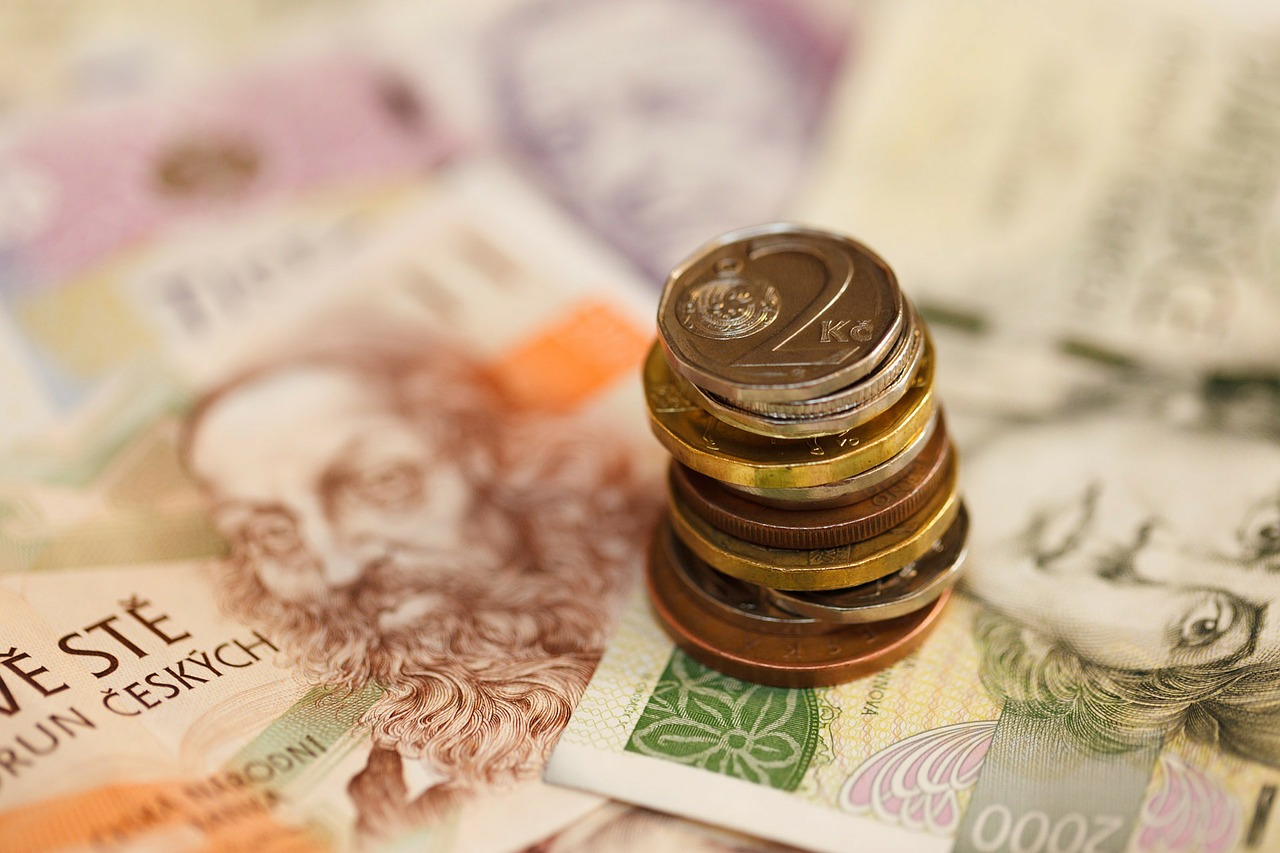The pension system and retirement savings under the magnifying glass.
Can we rely on the state to provide us with a decent pension? What will be the standard of living in retirement, and what can today's 30-somethings expect? It is essential to start addressing this question and planning for retirement early. We have taken an in-depth look at pension saving, its advantages and disadvantages, and how it compares to other ways of providing for old age.
 Reading Time: 12 minutes
Reading Time: 12 minutesHow does the state finance the Czech pension system?
Do you know how pensions work today? In the Czech Republic, there is a so-called pay-as-you-go pension system, where the state finances the pensions of current pensioners from the contributions of economically active citizens.
This system is directly dependent on the demographic curve. Simply put, those who are employed and working pay the pensions of the elderly. Therefore, it is crucial to have a sufficient number of people actively participating in the economy, contributing to the pension scheme, so that the funds can be used to pay pensions.
However, the distribution and long-term demographic development of our population pose challenges to this system. The baby boomers are getting older, people are living to increasingly older ages, and the number of children being born is lower than the future number of pensioners. As a result, it becomes increasingly difficult for the state to sustain the same level of contribution to pension payments in the coming decades.
The share of children and seniors over 65 in the Czech population has evolved over the last 72 years. While in 1947, people over 65 made up less than 8% of the population, by 2019, they already accounted for more than 20%. Conversely, in terms of fertility, the trend is reversed. Since 2006, for the first time in history, there are proportionally more pensioners than children in Czech society.
The population is aging, and the number of those who pay social insurance on their earnings is decreasing.
When there is an imbalance between the number of pensioners and the number of economically active citizens, the state must regulate the system by either reducing pensions, increasing pension contributions, raising the retirement age, or a combination of these options.
Another option is to completely change the system, but no government wants to embark on pension reform. Although it is a necessary step and widely discussed, no government has yet followed through on it. Implementing such a reform will not be a popular move, as more money for pensioners will have to come from other sources.
The last more successful attempt at a solution was to build three pillars of pension provision. In other words, the state has given citizens a new opportunity to start saving for their own retirement now. We’ll discuss that later in the article.

When to retire and under what conditions
Although we are spending more and more years on average in retirement, the day when it is possible to become a pensioner is gradually getting further away.
As recently as 1965, men were retiring at 60, and women, depending on the number of children, at 53. Today, for all those born after 1971, the upper retirement age has been pushed back to 65, with the lowest retirement age for women at 61 years and 8 months at the earliest (this is, of course, with 5 or more children).
To qualify for a pension, you must have 35 years of pensionable service. If this condition is not met, you are not entitled to a pension.
The age at which you can retire depends on the year you were born, your gender, and the number of children you have (as a woman). For a detailed overview, you can visit the CSSA website, where there is also an online pension calculator.
What lies ahead for today’s pensioners and what can today’s 30-somethings expect?
Considering all the data and predictions we listed above; it is evident that the standard of living for seniors today is no longer as comfortable as it used to be. The average Czech pension in 2021 was CZK 16,938 for men and CZK 14,080 for women. When compared to housing prices, the average cost of a small 2-bedroom apartment for rent in Prague during the same time period was around CZK 18,000, plus a few thousand crowns for utilities. Even retirement homes with better care facilities charge around CZK 20,000 per month. Hence, seniors cannot afford to pay for a small rental apartment in Prague or a superior retirement home solely from their pension income. In comparison to the average wage, the income of pensioners is roughly half.
Additionally, with the advancements in healthcare, the average lifespan has increased. Men now spend an average of 19 years in retirement, and women spend 28 years.
A study prepared for the ČSOB Pension Fund “Stabilita” by the IDEA Institute at the CERGE-EI academic institute has calculated the projected developments if the current pension system is maintained. In the next 20 years, pensions are expected to fall by 10%, or even 15% according to other experts. With the expected demographic and economic changes, today’s average earners in their thirties should anticipate receiving a pension from the state of only CZK 6,500 in 2050.
You can find out how much your monthly pension is expected to be using the Czech Social Security Administration’s app.

About the three pillars of retirement savings
Between 1995 and 2010, numerous proposals for pension system reform were presented by different governments. However, governments changed rapidly, and none of these proposals were fully implemented.
In 2013, the then Czech government embarked on a journey to change the pension system, aligning it with economically advanced countries boasting higher living standards. They introduced a three-pillar system, which has proven successful in countries like Switzerland, Finland, and New Zealand. The principle behind the three-pillar system is that a citizen’s pension consists of three types of income: a pension from the state, a pension from a pension fund, and a pension from personal savings and investments.
The Czech version of the three pillars of the pension system was structured as follows:
Pillar 1: Pension insurance
The first pillar serves as the primary source for the payment of the regular old-age pension, functioning in the same way as described at the beginning of this article. It is mandatory for all citizens, with both employees and their employers contributing a portion of their earnings. Self-employed workers also have a minimum contribution requirement.
People of working age make contributions from their wages, which are then used by the state to pay pensions. The amount of pension an individual should receive in retirement is directly related to the contributions they make during their working years. The higher the contributions they pay, the higher their pension will be.
Additionally, it is possible for individuals to contribute voluntarily to the first pillar, specifically the same minimum as self-employed workers. This option can be utilized, for example, by housewives caring for a child after parental leave, caring for a sick child, and other similar situations.

Pillar 2 (now abolished)
When the new system was introduced, people had the option to pay less to the state and allocate more to a pension fund.
However, due to constant conflicts between the Czech government and the opposition, coupled with intense political communication, there was minimal interest in the second pillar, leading to its abolition at the turn of 2005/2006.
Pillar 3: Supplementary pension savings (formerly also supplementary insurance)
The third pillar is entirely voluntary and consists of two parts – supplementary pension insurance and supplementary pension savings. While the supplementary pension scheme was available until the end of 2012, since 2013, people have been able to save through the supplementary pension savings scheme.
To summarize, the current system in 2023 comprises compulsory pension insurance and voluntary supplementary pension savings.
In this revised system, citizens play an essential role as they can start saving for their retirement voluntarily by investing in pension funds. As a benefit, they receive contributions from the state and build a financial reserve for a better old age.
At the same time, employers can offer pension savings as one of the benefits. This pays off for both employees and employers because, up to CZK 50,000 per year, these funds are exempt from social and health insurance. In practice, this means:
- Saving 34% of compulsory contributions for employers,
- Saving 11% in compulsory contributions for employees compared to a direct increase in wages,
- Any contribution amount is 100% tax-deductible for the employer, provided that its provision is regulated by an internal regulation or collective agreement (as required by law).
What is the difference between supplementary pension and a pension savings plan?
Firstly, supplementary pensions can no longer be taken out; this was only possible until 2012. Since 2013, we speak of supplementary pension savings. Therefore, whether you have a supplementary pension or a pension savings plan depends on the year you signed the contract.
In terms of appreciation, the newer supplementary pension savings are definitely better. This is because the original superannuation or transformed funds are legally required to be invested conservatively and have an average annual return of around 1%. Even with the state contribution (which we will look at in the next paragraph), this return is terribly low.
TIP: Did you sign up for supplementary pension insurance before 2013? If you have more than 10-15 years left until retirement (it doesn’t make sense otherwise), let it be calculated whether is worth terminating the contract, and putting your savings elsewhere. Incomes from supplementary pension insurance are and will be lower than if your finances were just sitting in a savings account.
Retirement savings offer an advantage over insurance since they provide a range of strategies to choose from, including conservative, balanced, and dynamic approaches. The management of funds and the variety of instruments used are the key reasons why supplementary pension savings make more sense for long-term savings compared to the original pension.
Each company offers a compulsory conservative fund, mainly focused on government bonds, along with optional dynamic funds containing equities. Dynamic funds carry a higher risk of asset decline, which is balanced by the potential for higher appreciation. These dynamic funds are more suitable for clients saving for longer periods of time.
In fact, evaluating the performance of mutual funds, especially the dynamic variants, is relevant over a period of up to five years. Long-term investing relies on average results over several years, rather than on changes from one year to the next.
What are the advantages and disadvantages of pension savings?
Let’s summarize the main benefits of a pension: you save for your retirement while receiving state benefits and tax relief.

The minimum monthly deposit is CZK 300 to get the state support. The amount of state aid for pension savings depends on the amount of the monthly deposit, as follows:
Deposit in CZK | State contribution in CZK
300 90
400 110
500 130
600 150
700 170
800 190
900 210
1000 230
You can save more than CZK 1,000 per month, but the maximum state contribution remains CZK 230 per month.
In addition to the state contribution, you can expect a low appreciation of the fund. There is no question of a highly profitable investment, especially considering that inflation has not been below the 2% threshold since 2016.
Another disadvantage is the management fees for handling the savings. For superannuation, there is a management fee of up to 0.8% per annum plus 10% of the return.
Regarding supplementary pension savings – for a balanced and dynamic strategy, the management fee is up to 1% per annum plus 15% of the return.
Are all the percentages, numbers, returns, contributions, fees, and inflation making your head spin? There is only one solution: calculate everything yourself or have it computed in a clear table, taking into account the number of years left until retirement.

Who can take out pension savings?
Supplementary pension savings are available to all individuals, regardless of age, nationality, or citizenship.
To be eligible, a participant must be a permanent resident of the Czech Republic or a resident of an EU Member State or another contracting state under the Agreement on the European Economic Area, and meet one of the following criteria:
- Participates in pension insurance under Czech legislation,
- Receives a pension from such pension insurance,
- Participates in public health insurance in the Czech Republic.
Both individuals who do not yet have a supplementary pension scheme and those who decide to switch from existing funds can join the participatory funds within the framework of supplementary pension savings.
Additionally, a legal guardian may conclude a contract for a minor child under the age of 18.
Upon reaching the age of 18 and meeting specific conditions (minimum savings period of 10 years), the participant will be able to withdraw up to 1/3 of their own funds in the form of a partial withdrawal (state contributions remain in the participant’s account).

Where retirement savings pay off the most
You can set up supplementary pension savings with a pension company. These companies can operate only with a state license and are subject to the supervision of the Czech National Bank for all their management and investments. The details and benefits are defined in the pension plan, which forms an integral part of the contract and cannot be changed without your consent. The pension plans are approved by the CNB.
Savings take the form of regular monthly deposits. (To reiterate: the state contribution for deposits between CZK 300 and CZK 999 is CZK 90 + 20% of the deposit amount exceeding CZK 300 per month. For deposits of CZK 1,000 onwards, the allowance is CZK 230).
Pay attention to the terms and conditions, as they determine the profitability of the pension savings, not just the amount of the return. If you are planning to arrange a pension savings plan, it’s a good idea to get several offers and choose based on the current conditions. Online comparators can also be helpful. Below are some tips on what to look for and what to watch out for in your contract.
What will happen to my money if I don’t even live to see retirement?
If you die prematurely, your family won’t lose their finances, but there’s a catch. In the event of a client’s death in a supplementary pension scheme or supplementary pension savings plan, the saved funds will be paid to a nominated person or go into inheritance proceedings.
However, be cautious about setting up a supplementary insurance payout in the form of a lifetime pension – in this case, the unpaid money remains with the insurance company.
If you want the money from the supplementary pension to be received gradually during your retirement and also want it to be paid to your survivors upon your death, it is essential to have a contractual survivor’s pension.

What if I want to take money out of my pension early?
Again, it depends on the type of contract you have. You will benefit from the option of a retirement pension, which allows you to have up to 50% of your savings paid out early before reaching the age of 60 if you have been saving for more than 15 years.
But if you don’t have a retirement pension, or you haven’t yet met the conditions for it, and you need to access the money sooner, you’ll not only lose your state contribution, but you’ll also lose some of your income and employer contributions.
What to look out for in a pension savings contract?
The contract and pension plan should specify, among other things, the types of pensions and benefits offered.
Old-age pensions are compulsory, but other pensions, such as survivor, retirement, and disability pensions, may or may not be offered by the pension fund/company.
The compulsory benefit typically includes a lump sum and a severance payment.
When reviewing the contract, pay attention to the following:
- Type of pension: Make sure that the contract clearly outlines the types of pensions provided by the plan.
- Minimum or maximum insurance period: For old-age pensions, two conditions must be met simultaneously to qualify for payment – age (usually 60 years) and completion of the insured period (at least 5 years).
- Retirement pension: After 15 years, the participant may be able to withdraw half of the money without reaching the age of 60. Most funds allow this option.
- Disability pensions: These allow money to be withdrawn before age 60 if the client becomes totally disabled. At least three years of savings are typically required as a prerequisite.
- Survivor pension: This pension is paid to the individuals designated in the contract in the event of the participant’s death.
Method of payment of the benefit
The money from the pension/savings plan can be withdrawn using the following methods:
- Lump sum settlement: The client receives all the money saved in one lump sum, including the state contribution and the appreciation credited by the fund each year.
- Fixed-term pension: Regular payments are made to the client over a pre-determined period of time.
- Lifetime pension: A pension is paid to the client for life. However, be aware that opting for this method may result in forfeiting your inheritance, and if you die prematurely, the funds may be forfeited to the insurance company.
- Survivor’s pension: Regular pension payments are made to the individuals named in the contract in the event of the participant’s death for a specified period as outlined in the pension plan.
- Retirement benefit: This is payable to a participant who has made contributions for at least 12 calendar months and has been covered for at least one year. Unless otherwise entitled, individuals designated in the contract may also receive it. However, entitlement to the state contributions and their proceeds is lost when the severance payment is made.
- Inheritance: If the participant has not been paid a pension and has not become entitled to a survivor’s pension, inheritance may be possible.
What are the other ways to make more money in retirement?
Not everyone will be able to earn extra money in retirement or build up a passive income. So, if you don’t want to rely solely on a minimum pension, your best option is to save while you are still gainfully employed.
Pension saving is popular in the Czech Republic. According to data from the Ministry of Finance in 2021, more than 4.4 million Czechs are saving in the third pillar, with an average monthly saving of CZK 758 for their pension.
However, pension savings are not the only, or even the most advantageous, tool for long-term saving. The Ministry of Finance itself recommends that pension savings should not be the sole method of saving.
If you take CZK 3,000 per month and invest it, you will end up with more money and better knowledge than if you put the same amount into a supplementary pension savings plan with state support.
Our advice is: inform yourself, search, compare, and consult. There are several options, such as shares, ETFs, mutual funds, and real estate.
While there is a risk of losing your investment, if you follow the rules of safe investing and diversify your investments across various investment opportunities, even with minor setbacks, your investment can pay off.
How much money will you have in your account when you retire at 65?
- Nothing, if you don’t want to worry about saving for retirement just yet.
- About CZK 1,600,000 if you set up a conservative pension savings account.
- CZK 8,825,744 if you invest with RONDA INVEST in products with a 9% annual return.
As you can see, your options for enjoying your retirement will vary considerably. These figures make one very important point: time plays the biggest role in saving and investing. The sooner you start, the better for your future self.




